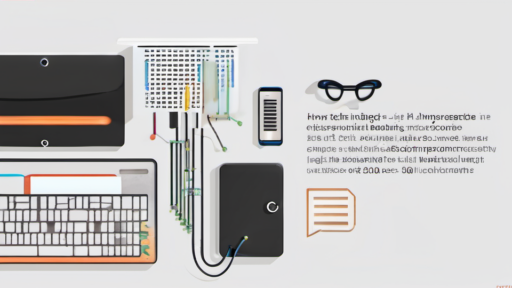You Think You’re Safe? Think Again. The World Is Under Attack, and Here’s How We’re Fighting Back!
Imagine a world where your most valuable data, your secrets, your very identity, are constantly under attack. It’s not a scene from a Hollywood blockbuster; it’s the reality we live in. Every day, hackers, cybercriminals, and nation-state actors try to breach our defenses, exploiting vulnerabilities in cybersecurity infrastructure to steal, disrupt, and manipulate. But, what if I told you there’s a glimmer of hope? A wave of technological innovation is rising to meet this challenge head-on. From AI to blockchain, we’re witnessing the birth of a new era in security, one that leverages the power of technology to protect what matters most.
AI: The Mind-bending Weapon in Cybersecurity
The war against cyberattacks has entered the realm of artificial intelligence. No longer are security professionals the sole defenders of the digital world; they have an invaluable ally – AI-powered security solutions.
AI’s Superpowers:
- Predictive Intelligence: AI algorithms analyze vast quantities of data, recognizing patterns and anomalies that might signal an impending threat. They can predict attacks before they occur, allowing for preemptive defenses and the minimization of damage. Imagine a system that detects a subtle shift in your network behavior, one that foreshadows a denial of service attack.
- Automated Response: With AI, security teams are no longer solely reliant on manual responses to incidents. AI systems can identify and respond to threats in real-time, automatically blocking malicious actors and mitigating damage before human intervention is even necessary.
- Enhanced Threat Detection: AI can delve deeper into complex security incidents, analyzing malware and identifying its origins and intent. By leveraging machine learning, AI systems continuously refine their knowledge, becoming even more adept at detecting new and evolving threats.
These advantages make AI an invaluable tool in the modern security landscape, enabling security professionals to proactively address threats, optimize resource allocation, and ultimately bolster their overall security posture.
Blockchain: Building Unbreakable Trust
The decentralized nature of blockchain technology offers a revolutionary approach to security. In essence, it acts as a digital ledger of transactions, immutable and tamper-proof, providing unparalleled transparency and trust.
Blockchain Security Advantages:
- Immutable Data: Once a transaction is recorded on a blockchain, it can never be altered or deleted. This level of security makes it virtually impossible for attackers to tamper with records or alter critical information. Imagine securing digital assets, identities, or critical records with a level of immutability previously unattainable.
- Secure Data Sharing: Blockchain allows secure data sharing without compromising privacy. With distributed ledger technology, information can be accessed by authorized parties without the need for a central authority or vulnerable intermediaries.
- Trustless Environment: Transactions on blockchain are verifiable without relying on a central authority, promoting transparency and accountability. This trustless environment mitigates the risk of manipulation and fraud, promoting greater security in interactions between parties.
Blockchain’s revolutionary approach to trust and security holds enormous potential for securing data, safeguarding identities, and building secure digital infrastructure.
Quantum Computing: Revolutionizing Encryption
The era of quantum computing is upon us, bringing both promise and challenges to cybersecurity. With the immense processing power of quantum computers, they hold the potential to break traditional encryption algorithms, posing a significant threat to existing security protocols. However, the same technology that could be used to crack encryption can also be leveraged to reinvent it, paving the way for even more secure systems.
The Double-Edged Sword:
- Breaking Encryption: Quantum computers’ unmatched computational power could pose a threat to current encryption methods. Existing encryption protocols rely on complex mathematical problems that are practically impossible for classical computers to solve, but quantum computers might be able to crack them with ease.
- Quantum-Resistant Encryption: Fortunately, the development of post-quantum cryptography (PQC) is underway, designing encryption algorithms that are resilient against attacks from even the most powerful quantum computers.
The future of encryption lies in the development and implementation of these quantum-resistant solutions, safeguarding our digital world against the formidable power of quantum computing.
The Rise of Zero Trust Security
The traditional security approach centered around a perimeter-based model – building a moat around your network and trusting everything within. But this approach is vulnerable, relying on the assumption that anything inside the moat is safe. Zero Trust, on the other hand, adopts a completely different mindset, never trusting anything or anyone, not even internal users or devices. It challenges the “castle-and-moat” mentality, forcing security professionals to examine every single access request with extreme scrutiny.
Why Zero Trust?
- Proactive Approach: Zero trust adopts a proactive, rather than reactive, stance against threats. Instead of waiting for a breach to occur, zero trust emphasizes continuous validation and authentication, minimizing potential damage in case a breach happens.
- Reduced Attack Surface: By implementing strict access controls and verification for every interaction, zero trust significantly reduces the attack surface. Even if an attacker manages to compromise a single user account, their ability to move laterally within the network is significantly hampered.
- Improved Security Posture: Zero trust security creates a multi-layered defense, reinforcing every single touchpoint within the system. This layered approach is crucial to mitigate the increasingly complex and targeted attacks we’re witnessing today.
Zero Trust is not a one-size-fits-all solution, but rather a paradigm shift in security thinking, emphasizing a more proactive and granular approach to managing access and ensuring the integrity of data.
Staying One Step Ahead of the Threat
As technology evolves, so too do the methods used by malicious actors. The battle for cybersecurity is an ongoing arms race, and staying one step ahead of the enemy requires constant innovation and adaptation.
Key Takeaways:
- Embrace technological advancements: AI, blockchain, and quantum computing offer powerful tools to bolster security, but they require careful implementation and understanding.
- Adopt a Zero Trust mindset: Never assume anything is inherently trustworthy; continually verify identities and access rights to minimize attack surfaces.
- Embrace a proactive security posture: Invest in security solutions that detect and respond to threats before they escalate.
- Keep learning: Cybersecurity is a constantly evolving field. Stay informed about emerging threats, security best practices, and technological advancements to ensure your defenses remain robust.
The future of security is inextricably linked to technological advancements. By harnessing the power of AI, blockchain, quantum computing, and Zero Trust security principles, we can build a more resilient and secure digital world, one that effectively combats evolving threats and safeguards our data, identities, and future.






